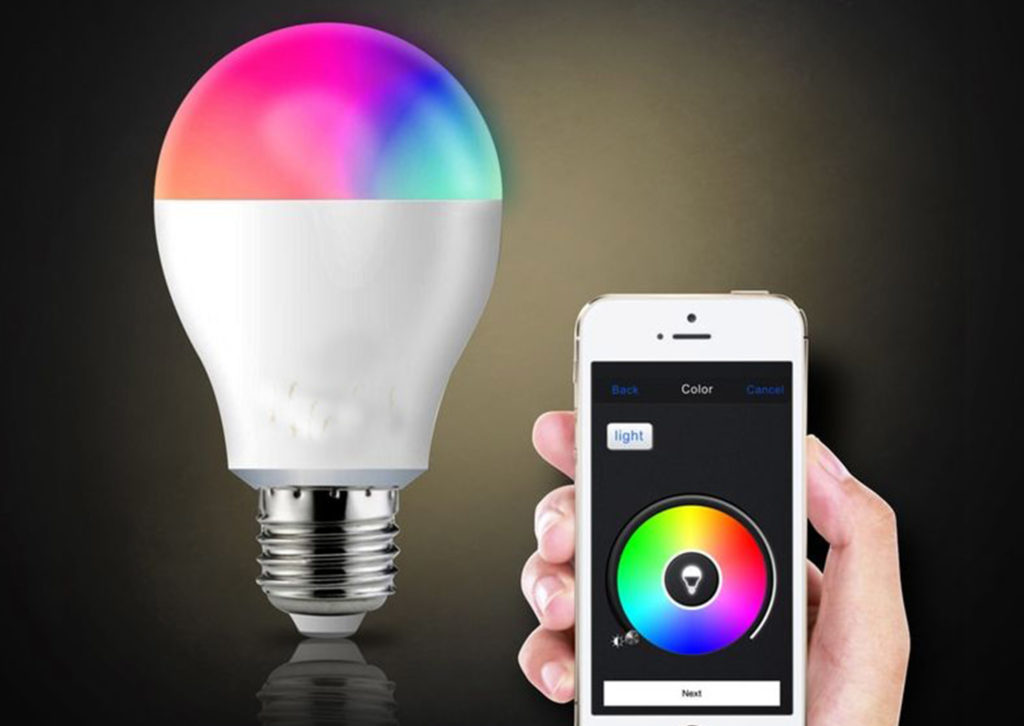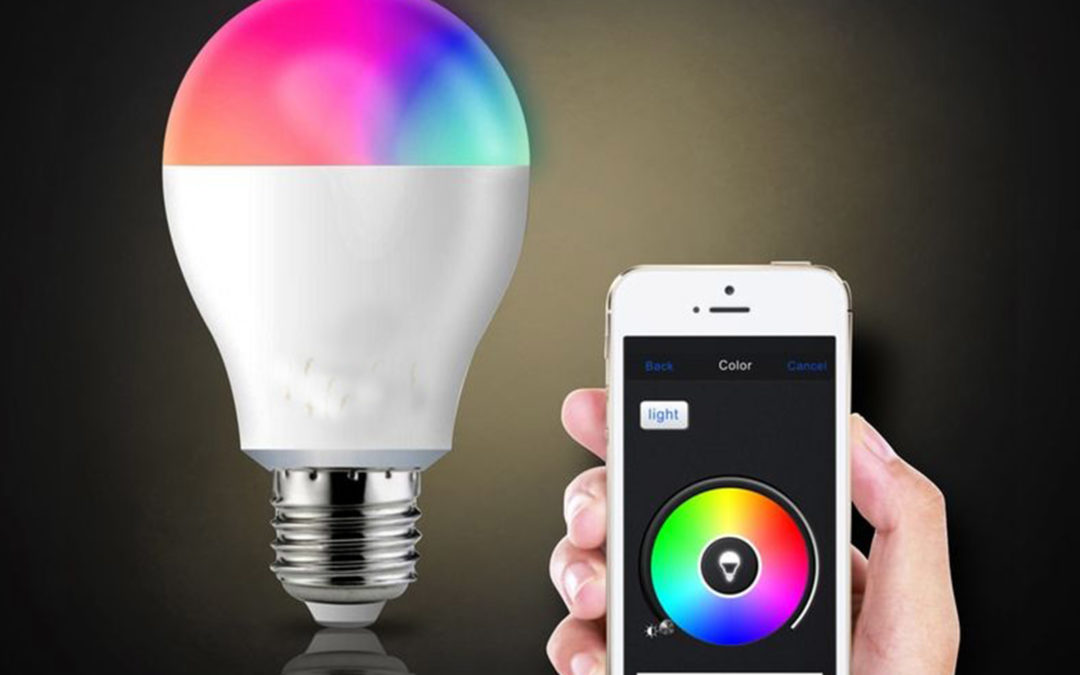How to use Bluetooth Smart in Industrial Lighting

In this article, we will learn about How to use Bluetooth Smart in Industrial Lighting. Bluetooth Smart is the latest addition to the Bluetooth Specification and it uses Bluetooth low energy (BLE) technology to enable the Internet of Things (IoT) for products that operate or work on small coin cells for years.
Light sources are quite important. Did you know that there are professional interior designers that focus on composing the “right” light scenery in order to bring unconscious satisfaction and happiness into your home or workplace?
Bluetooth Smart in Industrial Lighting
1. Affect our mood
Lights can affect your mood and change it, or enhance it. A romantic evening will be enhanced with some warm reddish lights whereas squirting a smooth light green palette on a wall beside your work desk might reduce stress. In conclusion, the lights are important.
2. Digitalized LED light bulbs

Light bulbs, as commercialized by Thomas Edison, have been used for more than a century in different models with evolving solutions electronically. We are now in an era of a shift to digitalized LED light bulbs.
The age of analog is bending over for the digital smart solutions. Let’s not dwell on the benefits of LED bulbs but rather focus on the next step that is putting something intelligent into the light bulb.
3. Allowing a gateway to control to control Multiple lights.
Introducing digital embedded systems within the bulbs that has also introduced opportunities to add connectivity. ZigBee technology has been successful in adopting this application by providing a wireless network topology allowing a gateway to control over hundreds of light sources at “once” through connected light switches or Internet access.
The control includes grouping, switching and, if supported, color manipulation. This can also be done with Bluetooth Smart. Bluetooth Smart is actually a star topology, which means that one master device (like a smartphone) connects to multiple slaves (like light bulbs), that is controlled separately.
One benefit or advantage ZigBee has with the network topology is that nodes in the network can route information which allows control of devices that might be out of range for the gateway.
For this to work with Bluetooth Smart there must be a way to move or pass information from one slave device to another. It could be implemented or accomplished by role switching. Though, role switching might be an unnecessarily complex solution.
Fortunately, Bluetooth Mesh is a feature that is being evaluated or assessed for Bluetooth low energy feature portfolio, which means that soon there might be a specification on how to implement or accomplish a network topology in an efficient, secure and robust way.
So could Bluetooth Smart coexist and add features to already deployed solutions or would this threat the existing ZigBee solutions.
Summary
 According to us yes, to both. If Bluetooth Mesh turns out to be low power and much more intelligent than ZigBee, it’s an evolutionary step to replace the technology for that certain use case. Nonetheless, there are always pros and cons and it’s wise to already consider designs where Bluetooth Smart is added to ZigBee.
According to us yes, to both. If Bluetooth Mesh turns out to be low power and much more intelligent than ZigBee, it’s an evolutionary step to replace the technology for that certain use case. Nonetheless, there are always pros and cons and it’s wise to already consider designs where Bluetooth Smart is added to ZigBee.
To an already deployed ZigBee solution, a Bluetooth Smart could be added by introducing a node (i.e. light bulb) that implements both Bluetooth Smart and ZigBee. It would not really be beneficial or useful to update the gateway for the solution as it already has smartphone connectivity through direct communication using Wi-Fi or the cloud.
Some might say that Bluetooth Mesh is a declaration or proclamation of war to the ZigBee Alliance but we think it’s an inevitable evolution.
The concepts presented or displayed in this article can be extended to any existing industrial application. ZigBee is a well-known and popular standard in a massive pool of wireless solutions including proprietary Sub-1 GHz up to the free 2.4 GHz band and beyond.
Lighting is just one of the many examples of Bluetooth Smart working its ways into new applications that require robustness and secure operation. Bluetooth Smart has been branded or marked as targeting consumer applications, but it’s definitely not limited to it.


